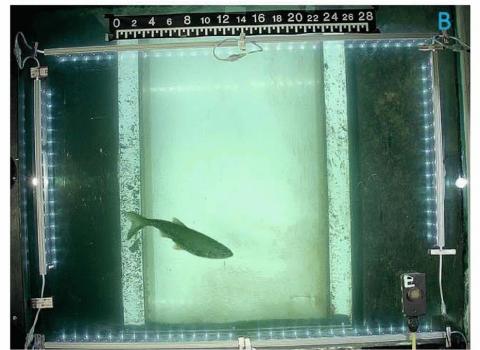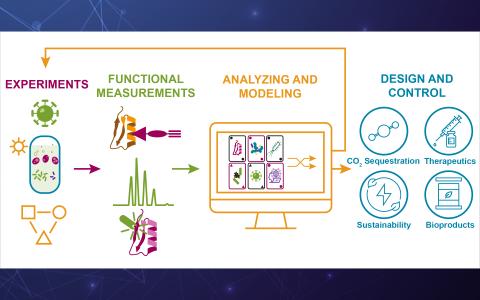Recent studies have shown that reducing the precision of floating‐point calculations in an atmospheric model can improve the model's computational performance without affecting model fidelity, but code changes are needed to accommodate lower precision or to prevent undue round‐off error. For complex...
Filter results
Category
- (-) Computational Research (17)
- (-) Computing & Analytics (15)
- (-) Weapons of Mass Effect (4)
- Scientific Discovery (250)
- Biology (155)
- Earth System Science (117)
- Human Health (94)
- Integrative Omics (60)
- Microbiome Science (26)
- National Security (21)
- Energy Resiliency (10)
- Data Analytics & Machine Learning (8)
- Visual Analytics (6)
- Computational Mathematics & Statistics (5)
- Materials Science (5)
- Renewable Energy (5)
- Atmospheric Science (4)
- Chemical & Biological Signatures Science (4)
- Coastal Science (4)
- Data Analytics & Machine Learning (4)
- Chemistry (3)
- Cybersecurity (2)
- Distribution (2)
- Ecosystem Science (2)
- Electric Grid Modernization (2)
- Energy Efficiency (2)
- Energy Storage (2)
- Grid Cybersecurity (2)
- Plant Science (2)
- Solar Energy (2)
- Bioenergy Technologies (1)
- Computational Mathematics & Statistics (1)
- Grid Analytics (1)
- High-Performance Computing (1)
- Subsurface Science (1)
- Terrestrial Aquatics (1)
- Transportation (1)
- Wind Energy (1)
Project Type
Publication Type
Tags
- Machine Learning (6)
- Type 1 Diabetes (6)
- Autoimmunity (5)
- Synthetic (5)
- Biomarkers (4)
- Molecular Profiling (4)
- Predictive Modeling (4)
- Mass spectrometry-based Omics (3)
- Alternative Splicing (2)
- Proteomics (2)
- Data inventory (1)
- DNA Sequence Analysis (1)
- Droughts (1)
- EBC (1)
- Exhaled Breath Condensate (1)
- Extreme weather (1)
- Fish Detection (1)
- Functional Annotation Analysis (1)
- High-Performance Computing (1)
- Hydropower (1)
- Kmers (1)
- Marine and Hydrokinetic (1)
- Omics (1)
- Python (1)
- Quantification (1)
- RNA Sequence Analysis (1)
- Snakemake (1)
- Software Data Analysis (1)
- TMT (1)
- underwater video (1)
Category
Exhaled breath condensate proteomics represent a low-cost, non-invasive alternative for examining upper respiratory health. EBC has previously been used for the discovery and validation of detected exhaled volatiles and non-volatile biomarkers of disease related to upper respiratory system distress...
Christine H Chang, William C Nelson, Abby Jerger, Aaron T Wright, Robert G Egbert, Jason E McDermott, Snekmer: a scalable pipeline for protein sequence fingerprinting based on amino acid recoding, Bioinformatics Advances , Volume 3, Issue 1, 2023, vbad005, https://doi.org/10.1093/bioadv/vbad005...
HDF5 file containing 10,000 hydraulic transmissivity inputs and the corresponding hydraulic pressure field outputs for a two-dimensional saturated flow model of the Hanford Site. The inputs are generated by sampling a 1,000-dimensional Kosambi-Karhunen-Loève (KKL) model of the transmissivity field...
The Human Islet Research Network (HIRN) is a large consortia with many research projects focused on understanding how beta cells are lost in type 1 diabetics (T1D) with a goal of finding how to protect against or replace the loss of functional beta cells. The consortia has multiple branches of...
Datasets
0
This data is a model of synthetic adversarial activity surrounded by noise and was funded by DARPA. The various versions include gradually more complex networks of activities.
Category
Datasets
1
Datasets
1
Category
Datasets
7
This project is an interdisciplinary collaboration supported by US DOE Office of Science's Scientific Discovery through Advanced Computing (SciDAC) program. The project addresses a crucial but largely overlooked source of error in the Energy Exascale Earth System Model (E3SM) and other atmosphere...
Category
Datasets
2
This data is a model of synthetic adversarial activity surrounded by noise and was funded by DARPA. The various versions include gradually more complex networks of activities.
Category
Datasets
1
Category
Datasets
1
Category
Datasets
1
Machine learning is a core technology that is rapidly advancing within type 1 diabetes (T1D) research. Our Human Islet Research Network (HIRN) grant is studying early cellular response initiating β cell stress in T1D through the generation of heterogenous low- and high-throughput molecular...
Datasets
3
Predictive Phenomics is addressing the grand challenge of understanding and predicting phenotype by identifying the molecular basis of function and enable function-driven design and control of biological systems .
Category
Datasets
0









